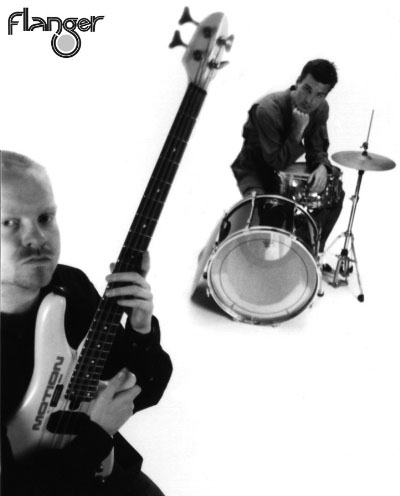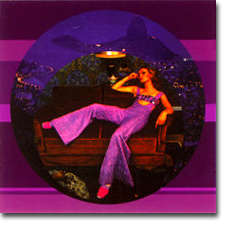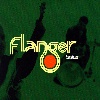SEPT '99
Atom Heart re: Flanger
News
New Reviews
Reviews Archive
Interview Archive
Hall Of Fame
Links
Contact


Ninja Tune's left-field sub-label Ntone, has released a fascinating collaboration between two of Germany's most forward-looking producers Uwe Schmidt aka Atom Heart and Bernd "Burnt" Friedmann. Atom Heart has had a prolific and wide-ranging ten year, 140 release career, beginning with industrial-dance as Lassigue Bendthaus, moving into techno in 1991 as Atom Heart and breakbeat as Atomu Shinzu, while collaborating with the likes of Pete Namlook (in many styles and names) and Tetsu Inoue (as Datacide, MU, Hat with YMO's Haruomi Hosono and 2nd Nature with Bill Laswell). But he feels his most satisfying collaboration to date is Flanger with Friedmann, who had a parallel development from industrial-dance as Drome and Some More Crime, to chill out and techno-fusion as Nonplace Urban Field.
"Bernd is one of the very few people/musicians, who think about what they are doing," Schmidt told MNN via email from his current home in Chile. "I have met many people who simply DO and of course get a result from that, but in an unreflected way. Like Bernd, I also think a lot before actually doing something. We talked about what to do, the 'how...' technical, aesthetical, musical parameters and because we both shared similar ideas, a collaboration was sort of obvious. Further Bernd is a unique programmer, his method and mine just merged perfectly."

As Flanger they've created the ultimate statement about music in the digital age, taking the techno-jazz of Schmidt's Lisa Carbon Trio alter ego and Nonplace's Raum Fur Notizen release into a transitional zone where acoustic playing and computer processed sounds are of equal value.

"Bernd's perspective is that of *simulation* (- to) simulate reality. His sound is acoustic while mine is much more artificial. I want to sound artificial, and rather use natural sound as a counter perspective. Bernd is doing a similar thing, but with the emphasis on breaking up the natural with the artificial. Whenever *jazz* appeared in my solo stuff, it was electronic jazz, digital jazz, whatever, but never *real* jazz. I found it fascinating to program real jazz at some point."
Templates' eight jazz/funk jams swing between the live playing and the drill-ish sounds of dissected waveforms, clicks and glitches. Mid-phrase the melodies played on vibes or electric piano are reduced to essential grains to be manipulated in a sound file, until the computer hands off to the studio floor again as if just another member of the band taking a solo.
"Flanger in some parts sounds just like a band playing a very well rehearsed set, until the digital, programmed nature leaks through. We are rather asking than answering: what is real? What is the difference between a programmed song which sounds exactly like played and a played song which sounds exactly like programmed? Finally isn't it all the same? The *non-repetitive* aspect is an addition to that theme. Bernd and myself both like to leave the '90s with it's loop fixation way behind and think that more complex, evolving structures are the way...(one way amongst many, I have to say). To generate a flow of sound which seems natural. To emulate the fuzziness and steady unsteadiness of a human being playing an instrument. To make music which is a simple and as complex as the sound you hear sitting on a shore."
Flanger is music to begin a new era with.
